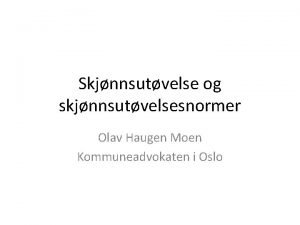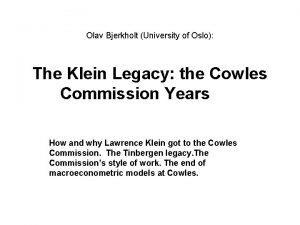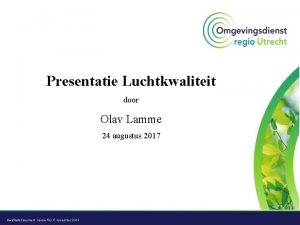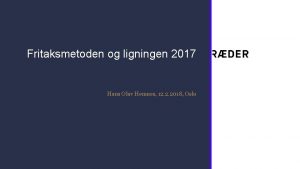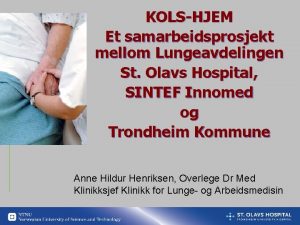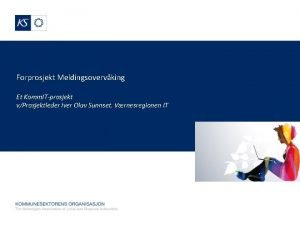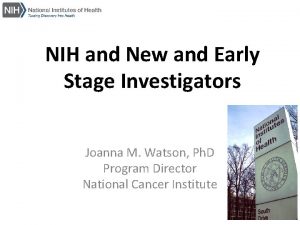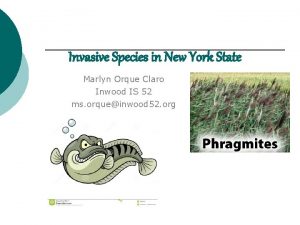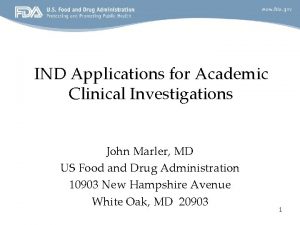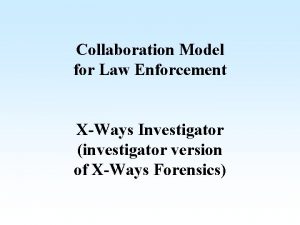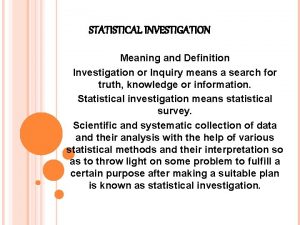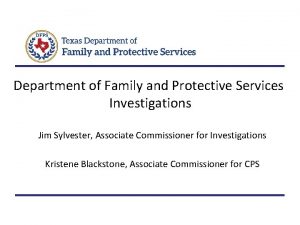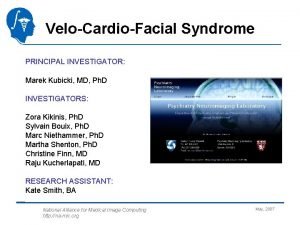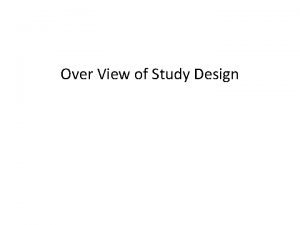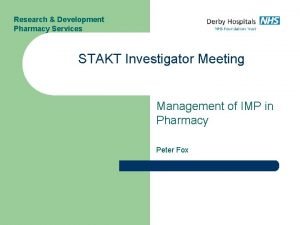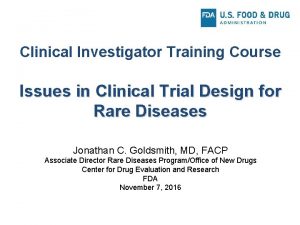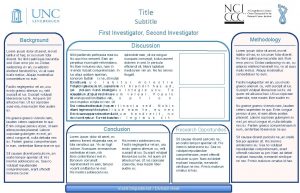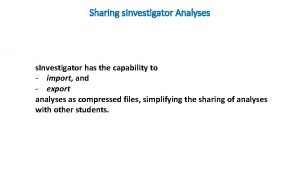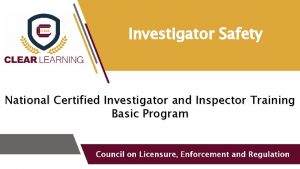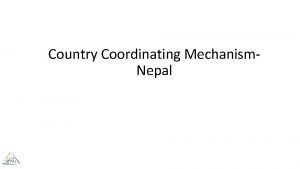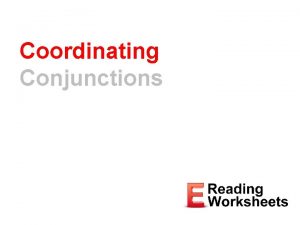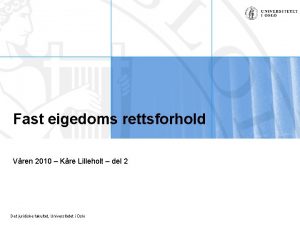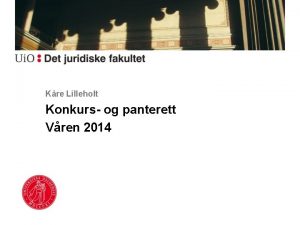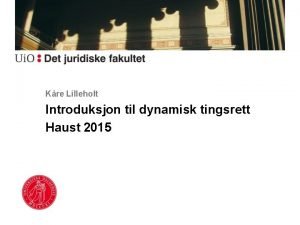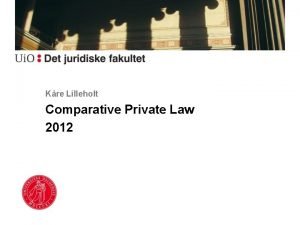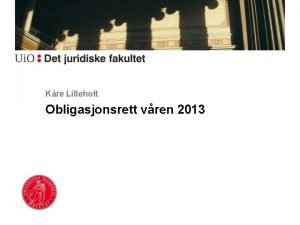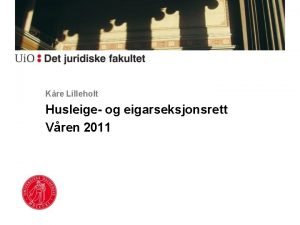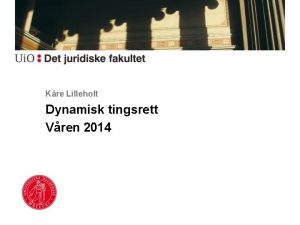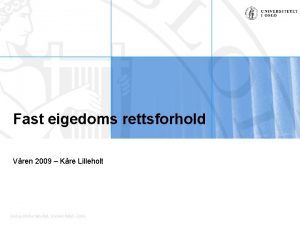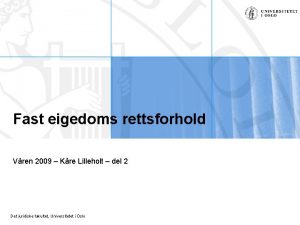Coordinating investigator Olav Lilleholt Schjrring MD Department of

































- Slides: 33

Coordinating investigator: Olav Lilleholt Schjørring, MD Department of Anaesthesia and Intensive Care Medicine Aalborg University Hospital Centre for Research in Intensive Care, CRIC V 1. 2, June 6 th 2017 hot-icu@cric. nu www. cric. nu/hot-icu

Background • Oxygen supplementation is standard treatment in ICUs worldwide (Oxygen is a drug but is not regarded as such) • Large proportions of ICU patients are hyperoxaemic(1 -6) 1. Suzuki et al; J Crit Care 2013, Oct; 28(5): 647 -54 2. Eastwood et al; Intensive Care Med 2012, Jan; 38(1): 91 -8 3. de Graaff et al; Intensive Care Med 2011 Jan; 37(1): 46 -51 4. de Jonge et al; Crit Care 2008, 12(6): R 156 5. Zhang et Ji; Sci Rep. 2016 Oct 13; 6: 35133 6. Dahl et al; Acta Anaesthesiol Scand 2015, 2015 Aug; 59(7): 859 -69

Background ICU Cohort, North Denmark Region 261. 355 Pa. O 2 values from 7001 patients Mean Pa. O 2: 12. 4 k. Pa (95 % reference interval 7. 3 -23. 4 k. Pa) Mean Fi. O 2 (during mechanical ventilation): 0. 47 (0. 30 -0. 95) A Pa. O 2 of 8. 0 k. Pa is generally considered above the limit of hypoxia 1, 2 No documented positive effect of Pa. O 2 above 8. 0 k. Pa 1 1. O’driscoll et al; Thorax 2008 Oct; 63 Suppl 6: vi 1 -68 2. Bein et al. ; Intensive Care Med. 2016 May; 42(5): 699 -711

Background Hyperoxaemia and mortality de Jonge et al. ; Crit Care. 2008; 12(6): R 156 Zhang, Z et Ji, X; Sci Rep. 2016 Oct 13; 6: 35133 Helmerhorst et al; Crit Care Med. 2016 Oct 19. [Epub ahead of print]

Background Hyperoxia - adverse reactions - Increased formation of reactive oxygen species (ROS)1, 2 - Hyperoxaemic vasoconstriction 3, 4 → Potential paradox tissue hypoxia 5 - Absorbtion atelectasis 6, 7, 8 1. Kallet et al; Respir Care 2013 Jan; 58(1): 123 -41 2. Helmerhorst et al; Crit Care 2015 Aug 17; 19: 284 3. Floyd et al. ; J Appl Physiol (1985). 2003 Dec; 95(6): 2453 -61 4. Bak et al. ; Acta Physiol (Oxf). 2007 Sep; 191(1): 15 -24 5. Stub et al. ; Circulation. 2015 Jun 16; 131(24): 2143 -50. 6 6. Rothen et al. ; Lancet. 1995 Jun 3; 345(8962): 1387 -91 7. Rothen et al. ; Br J Anaesth. 1998 Nov; 81(5): 681 -6 8. Aboab et al. ; Intensive Care Med. 2006 Dec; 32(12): 1979 -86

Background No solid evidence (large RCTs) supports specific targets of oxygenation in patients admitted to the ICU (this includes patients with COPD and ARDS) No guidelines exists addressing optimal oxygenation targets for patients admitted to the ICU

Background Metaanalysis Barbateskovic M, Schjørring OL, Jakobsen JC, Meyhoff CS, Dahl RM, Rasmussen BS, Perner A, Wetterslev J; Higher versus lower inspiratory oxygen fraction or targets of arterial oxygenation for adult intensive care patients (Protocol); Cochrane Database of Systematic Reviews 2017, Issue 4

Background Pilot trial - 103 patients, Sp. O 2 ≥ 96% vs Sp. O 2 = 88 -92% - No difference in clinical outcome - Trend towards lower mortality in the conservative group (after adjustment for baseline variables) Panwar et al; Am J Respir Crit Care Med. 2016 Jan 1; 193(1): 43 -51

Background 8 k. Pa 2. 7 5. 3 8. 0 PO 2 k. Pa 10. 7 13. 3 1. Collins et al; Breathe 2015 Sep; 11(3): 194 -201

Aim To assess the benefits and harms of two targets of Pa. O 2 in guiding the oxygen administration in acutely ill adults with hypoxaemic respiratory failure in the ICU Benefits Harms Mortality

Design • Investigator initiated, randomised, outcomeassesment blinded, parallel group trial of two separate Pa. O 2 targets throughout the ICU admission • Setting: aprox. 50 European ICUs • Start June 2017, Aalborg University Hospital

Design 2928 Patients Control Intervention Pa. O 2 = 12. 0 k. Pa Pa. O 2 = 8. 0 k. Pa n = 1464 Primary endpoint 90 -day mortality (all cause)

Organisation

Screening - Inclusion Criteria 1. Acutely admitted to the ICU, and 2. Aged 18 years or above, and 3. One of the following: ü Closed system with an Fi. O 2 ≥ 0. 50 (invasive mechanical ventilation, non-invasive ventilation or CPAP) ü Open system with an oxygen flow ≥ 10 litres pr. minute (includes high-flow systems) and 4. Oxygen supplementation in the ICU, expected duration ≥ 24 hours. If in doubt answer ’YES’, and 5. Intra-arterial catheter in place

Screening - Inclusion Criteria Open systems with automatic mixers: eg. certain humidifiers and high-flow systems

Screening When a patient fulfils all inclusion criteria, go to www. cric. nu/hot-icu Where you acces the electronic CRF (e. CRF) Personalised username and password

Screening When a patient fulfils all inclusion criteria, go to www. cric. nu/hot-icu

Randomisation ALWAYS REMEMBER TO OBTAIN CONSENT FROM THE PRIMARY TRIAL GUARDIAN (‘FØRSTE FORSØGSVÆRGE’) BEFORE RANDOMISATION - Can initially be orally - State the full name of the primary trial guardian in the patient’s medical journal - Informed consent should be obtained as soon as possible from the patient’s next of kin and the second trial guardian

Exclusion criteria > 12 hours since ICU admission Chronic mechanical ventilation Use of home oxygen Previous treatment with bleomycin Organ transplant during current hospital admission Withdrawal from active therapy or brain death deemed imminent Fertile woman with positive urine or plasma h. CG - In all fertile woman < 50 years of age, a negative h. CG-test must be Carbon monoxide, cyanide or paraquat poisoning

Exclusion criteria Methaemoglobinaemia Expected use of hyperbaric oxygen therapy Sicle cell disease Consent not obtainable Previously randomised into the HOT-ICU trial

Randomisation • Eligible patients will be randomised automatically to an oxygenation target (Pa. O 2) of: 8. 0 k. Pa or 12. 0 k. Pa • Prescribe the allocated oxygenation target in the patient’s ICU chart • Write a note of inclusion in the patient’s medical journal stating the allocated oxygenation target

Interventions • The allocated oxygenation target applies throughout the ICU stay to a maximum duration of 90 days • ICU Readmisions within 90 days continue the allocated intervention

Adherence to oxygenation target • Fi. O 2 is titrated from 0. 21 to 1. 00 to achieve the allocated Pa. O 2 in both interventional groups • When the oxygenation is stabilised, the Sp. O 2 can be used for continous Fi. O 2 titration

Adherence to oxygenation target • Procedural oxygen supplementation within the ICU above targets should be restricted to the minimally required (in both groups) • The oxygenation target should be upheld at all means possible during transportation, radiological examination and surgical procedures

Withdrawal A patient can be withdrawn from the trial if: 1. Consent is withdrawn or not given 2. A suspected unexpected serious adverse reaction (SUSAR) occurs • Fill in the withdrawal form in the e. CRF (www. cric. nu/hot-icu) • Continue data registration (daily forms) unless consent for this is also withdrawn

SUSAR Suspected Unexpected Serious Adverse Reaction (SUSAR) Is defined as serious adverse reactions directly related to oxygen which is not described in the summary product characteristics of oxygen (ARDS or atelectasis) If SUSAR occurs, withdraw the patient from the trial and contact the sponsor or coordinating investigator immediately (hot -icu@cric. nu or +45 2118 2543) Fill in the SUSAR report form (#14 in the Site Master File) and e-mail it to sponsor: hot-icu@cric. nu

Daily forms In e. CRF at www. cric. nu/hot-icu An ICU day is defined to be from 06. 00 h to 06. 00 h Daily forms should be fulfilled continuously throughout ICU admission To note: 12 -hour highest and lowest Pa. O 2 (with Sa. O 2 and Fi. O 2) -Obs. Use specified conversion table to calculate Fi. O 2 in ‘open systems’ TV, PEEP and Ppeak every day at 08. 00 h (if mechanically ventilated)

Discharge, transfer and death When a patient is discharged from the ICU or dies within the ICU, complete the Discharge and Readmission form at www. cric. nu/hot-icu

90 -day follow up Complete the 90 -day follow-up form at www. cric. nu/hot-icu - Mortality (including date of death) - Discharge from hospital (date of discharge) - Readmission to hospital (days readmitted within the 90 -day period) - Use of dialysis within the regular ward?

One-year follow up Complete the one-year follow-up form at www. cric. nu/hot-icu - Mortality (Drawn from the CPR registry in Denmark) - Euro. Qo. L (EQ-5 D-5 L + EQ-VAS) - RBANS (Cognitive function score) in selected sites

Trial Documents www. cric. nu/hot-icu

Contact Do you need help? Call the HOT-ICU hotline at: +45 2118 2543 Available 24/7 or hot-icu@cric. nu

Thank you hot-icu@cric. nu www. cric. nu/hot-icu
 Olav haugen moen
Olav haugen moen Olav bjerkholt
Olav bjerkholt Olav jones
Olav jones Olav lamme
Olav lamme Hans olav hemnes
Hans olav hemnes St. olav lungeavdelingen
St. olav lungeavdelingen Knutepunktet uio
Knutepunktet uio Bytteøkonomi
Bytteøkonomi Iver olav sunnset
Iver olav sunnset Early stage investigator nih
Early stage investigator nih Chin interactive investigator
Chin interactive investigator Crime scence investigator
Crime scence investigator Invasive species investigator worksheet
Invasive species investigator worksheet Biotechnology explorer gmo investigator kit
Biotechnology explorer gmo investigator kit John marler fda
John marler fda Ontario ombudsman investigator
Ontario ombudsman investigator X ways investigator
X ways investigator Drug diversion investigator
Drug diversion investigator Office of the correctional investigator
Office of the correctional investigator Social media forensics
Social media forensics Statistics
Statistics Gmo investigator kit
Gmo investigator kit Shared investigator platform (sip)
Shared investigator platform (sip) Swf investigator
Swf investigator Userra vets investigator
Userra vets investigator Private investigator craigslist
Private investigator craigslist Jim sylvester dfps
Jim sylvester dfps Invasive species investigator worksheet
Invasive species investigator worksheet Child family investigator colorado
Child family investigator colorado Investigator photos
Investigator photos Did investigator assign exposures
Did investigator assign exposures Ba mid career fellowship
Ba mid career fellowship Investigator meeting services
Investigator meeting services Fda clinical investigator training course
Fda clinical investigator training course
